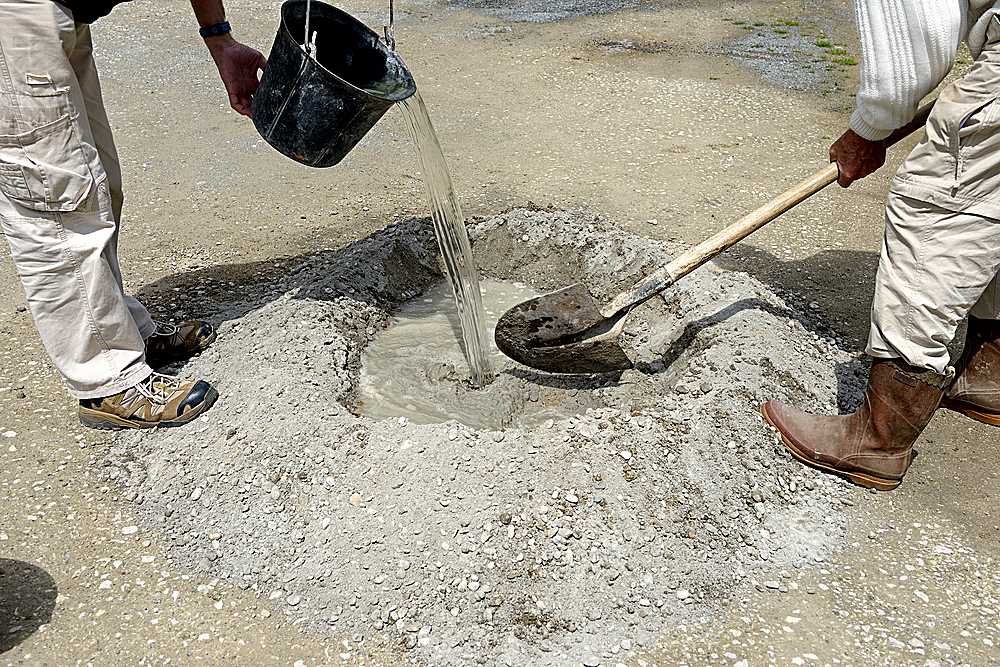Water is a critical component in concrete, actively participating in the chemical reactions with cement. The quality of water is often overlooked, but it plays a vital role in the strength and durability of concrete. This article explores the significance of water quality in concrete construction and its specifications.
Water Quality Parameters
Water for concrete should meet specific quality parameters to ensure the integrity of the structure. While some believe that if water is fit for drinking, it’s suitable for making concrete, this isn’t universally true. Let’s delve into the key considerations:
Quality of Water
The suitability of water for mixing concrete is not solely determined by its potability. Some waters suitable for drinking may not be appropriate for concrete due to various impurities. Conversely, water suitable for concrete may not necessarily be suitable for drinking. Specifications often require a strength comparison between concrete made with questionable water and that made with pure water if the source of water is in doubt.

Strength Assessment
Apart from potability, specifications may consider the pH value of water within the range of 6 to 8, along with the absence of organic matter. The best way to ascertain the suitability of water is to compare the strength of concrete made with the water in question to that made with distilled water. If the compressive strength reaches or exceeds 90%, the water source may be deemed acceptable. This approach is particularly relevant in areas with uncertain water quality.
Chemicals
Groundwater may sometimes be unsuitable for mixing or curing concrete. Various chemicals found in water can affect the setting time and strength of concrete. Carbonates and bicarbonates of sodium and potassium, when present in excessive amounts, can adversely impact concrete strength. Brackish water often contains chlorides and sulphates, which may be acceptable below certain concentrations.
Impurities and Their Tolerable Concentration in Mixing Water
Suspended particles, high levels of salts, and impurities like manganese, tin, zinc, copper, and lead can significantly reduce the strength of concrete. Specific concentrations of these impurities should be adhered to. For instance, salts like sodium iodate, sodium phosphate, and sodium borate can dramatically reduce the initial strength of concrete. Sodium sulphide, even at low concentrations, warrants testing. The presence of silts and suspended particles in water is undesirable as they interfere with setting, hardening, and bonding characteristics.
Use of Sea Water for Mixing Concrete
Sea water, with its distinct salinity, can be used for mixing concrete, but its impact on concrete properties varies. While it slightly accelerates early strength, it can reduce the 28-day strength. Sea water may also cause efflorescence and persistent dampness, making it unsuitable for applications where the appearance of concrete is vital. The use of sea water in reinforced concrete is debated. Some caution against corrosion, especially in tropical regions, while others find no such risk.
Research Findings
Research suggests that the risk of reinforcement corrosion is more related to the permeability of concrete and inadequate cover than the use of sea water. For reinforced concrete, avoiding sea water is a prudent choice. If it’s unavoidable, precautions, such as a low water-to-cement ratio and sufficient reinforcement cover, should be taken to make the concrete dense. Sea water should be avoided in prestressed concrete work due to stress corrosion and potential loss of cross-sectional area in small-diameter wires.
Sea Water in Concrete Construction
While the use of sea water in concrete construction is a topic of discussion, standards and guidelines have evolved to provide specific recommendations. According to the latest IS 456: 2000, the use of sea water is prohibited for mixing and curing of reinforced concrete and prestressed concrete work. However, it allows for the use of sea water for mixing and curing of plain cement concrete (PCC) under unavoidable situations. This illustrates the caution and restrictions surrounding sea water in concrete construction.

Concrete Curing and Water Quality
Water quality is also crucial during the curing process. Water that contains impurities, especially those causing staining, is unsuitable for curing concrete members with a significant aesthetic aspect. Staining is commonly caused by high concentrations of iron or organic matter in the water. If the appearance of concrete is important, water with more than 0.08 ppm of iron should be avoided during curing. Similarly, the use of sea water may be avoided in such cases. In other scenarios, water typically suitable for mixing can also be used for curing.
Conclusion
Water quality is a critical aspect of concrete construction, influencing its strength, durability, and appearance. Proper assessment of water quality is essential to ensure the structural integrity and longevity of concrete structures. While general guidelines exist, specific requirements and permissible limits may vary based on location and construction type. Understanding the effects of different impurities and the significance of water quality in various concrete applications is vital for constructing durable and resilient concrete structures.
Incorporating the latest research findings and industry standards into the assessment of water quality for concrete construction ensures that structures meet the desired performance and longevity expectations. Concrete is a versatile and robust construction material, but its properties can be significantly affected by the quality of the water used in the mixing and curing processes. Consequently, a thorough understanding of water quality parameters and their impact on concrete is essential for successful construction projects.
By adhering to the specified guidelines and making informed decisions regarding the quality of water for concrete construction, engineers, contractors, and builders can achieve concrete structures that not only meet but exceed the required standards for strength, durability, and visual appeal.


